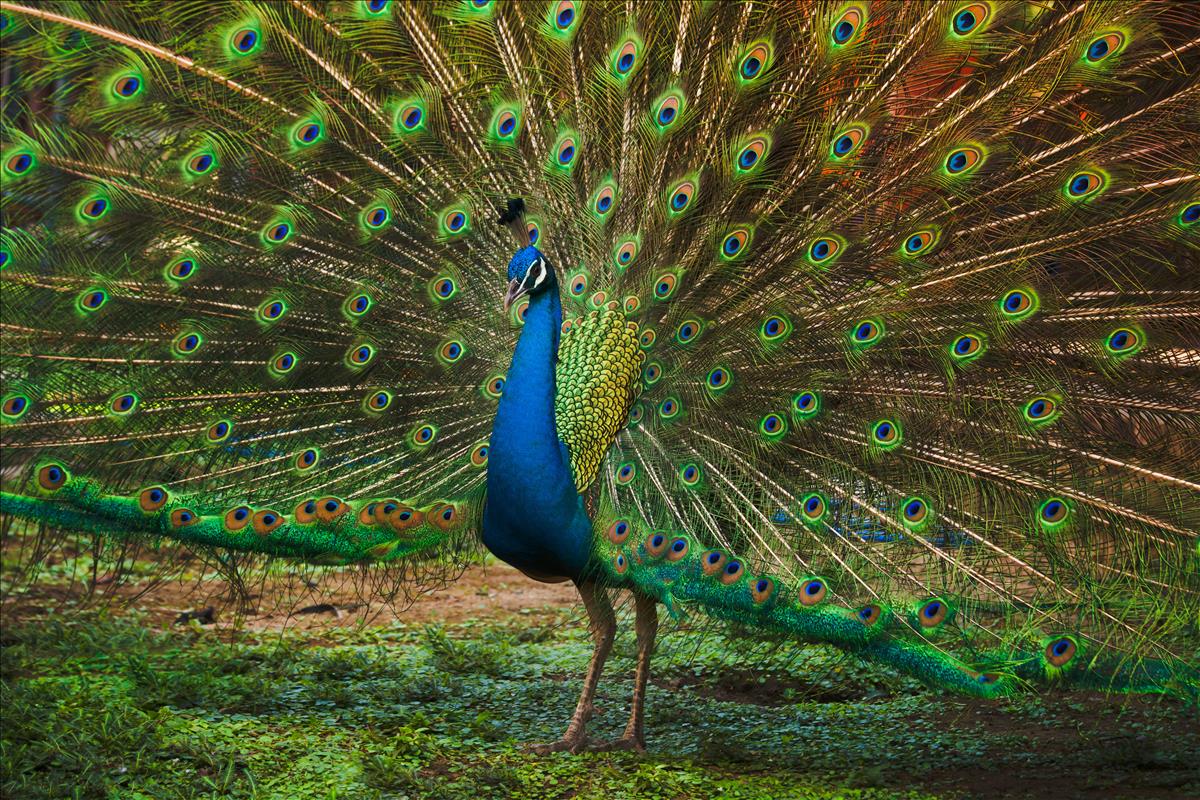Viewable


Bird
Location at the Zoo
Indo-Malaya Outdoor
Global Range
Indomalaya
Indian peafowl
Pavo cristatus
Order: Galliformes
Family: Phasianidae
Genus: Pavo
This species Pavo cristatus is the national bird of India. It is sometimes simply called the peacock; a peacock is the male, females are known as peahens and the young are peachicks. Pavo is Latin for peafowl, whereas, cristatus is Latin for crested. In the wild the head, neck, and breast of the peacock (male) is a glorious royal blue. They have white facial patches, one above the eye and one below. The head bears a fan-shaped crest made of a bunch of divergent brush-like feathers tipped with blue. The body is grayish, barred with brown on the back and brown wings and underside. The real beauty of the peacock is in its train, usually called its tail although made up of greatly elongated tail coverts, not of tail feathers. The upper tail coverts on its back are elongated and ornate with an eye (ocelli) at the end of each feather. These are the peacock's display feathers. The tail itself is brown and short as in the peahen. Including its train, a peacock measures 2.2 m of which nearly two-thirds is train. Immature males have varied plumage, but will have the fan-shaped crest and mottled blue upperparts. Second year males show a smaller tail, often without ocelli. By the third year, they reach full plumage and sexual maturity. The tail may continue to grow for another two to three years. Males will molt and lose their long coverts each year in late summer. The peahen is less showy, her plumage is more brownish and she lacks the train. Her facial skin and crest shape are the same as in male, but her crest is brown.
Females weigh 2.75-4 kg and have a length of approx. 86cm. Males are much larger weighing 4-6 kg and have a length of approx. 107 cm, except for during breeding season in which thier plumage extends to 2.12 m.
Females weigh 2.75-4 kg and have a length of approx. 86cm. Males are much larger weighing 4-6 kg and have a length of approx. 107 cm, except for during breeding season in which thier plumage extends to 2.12 m.
Conservation Status: IUCN













